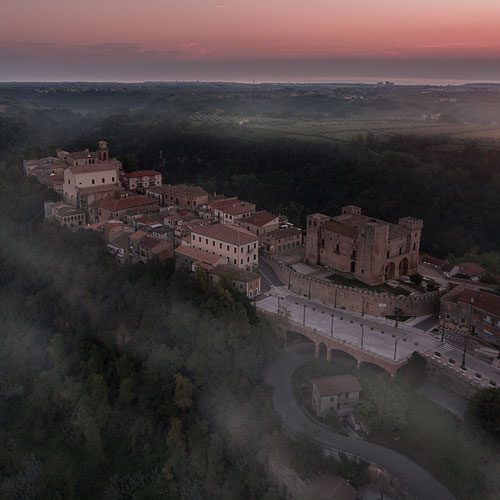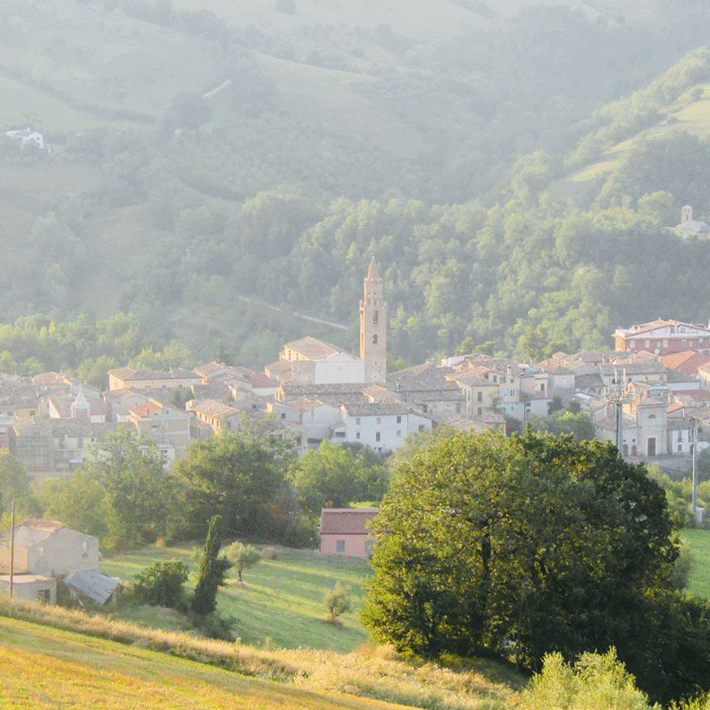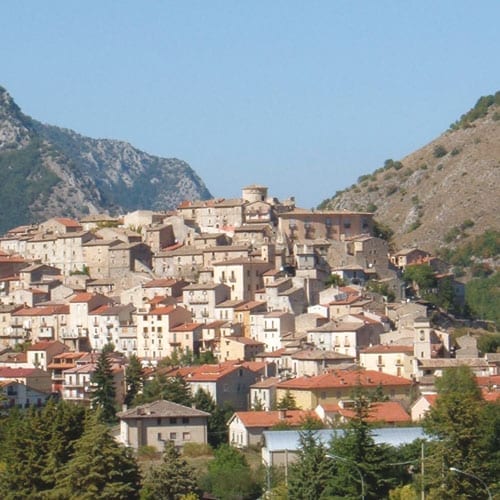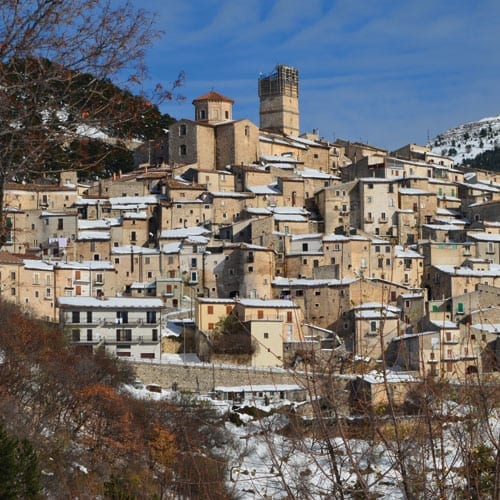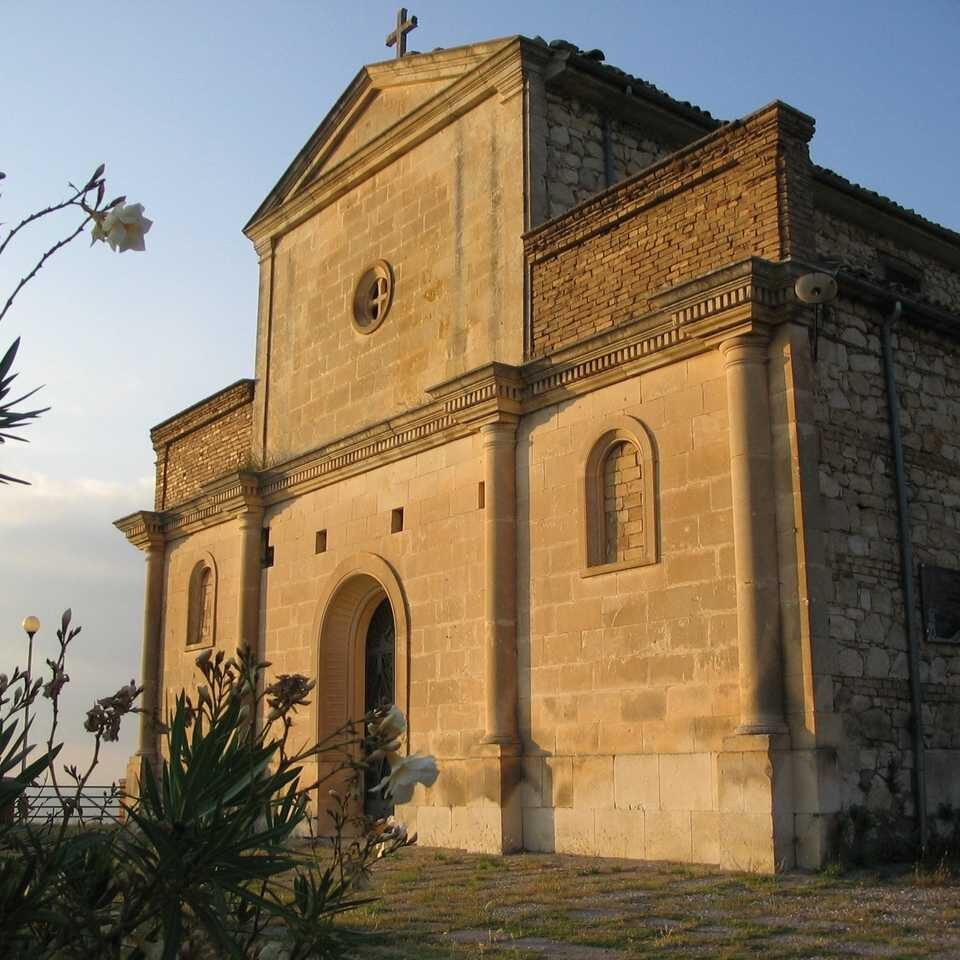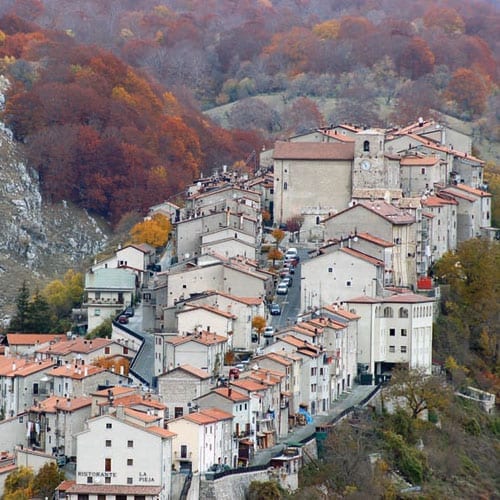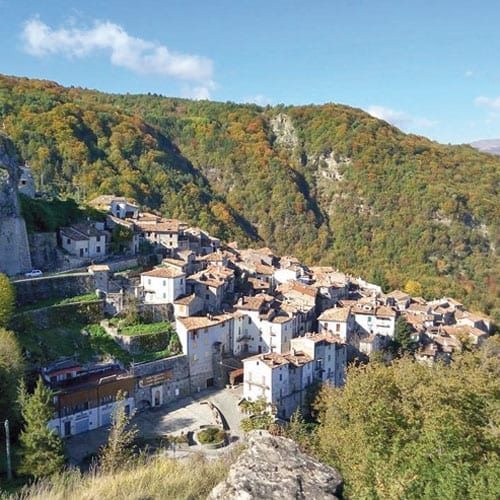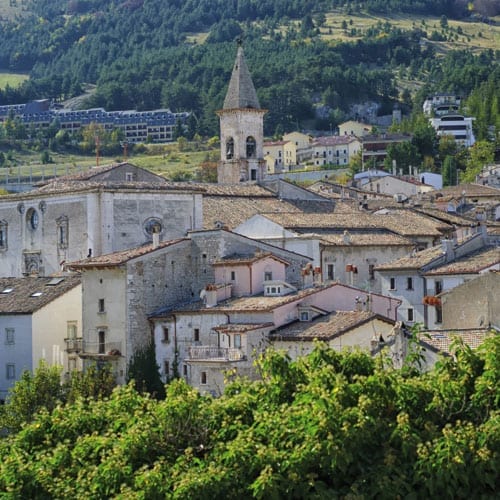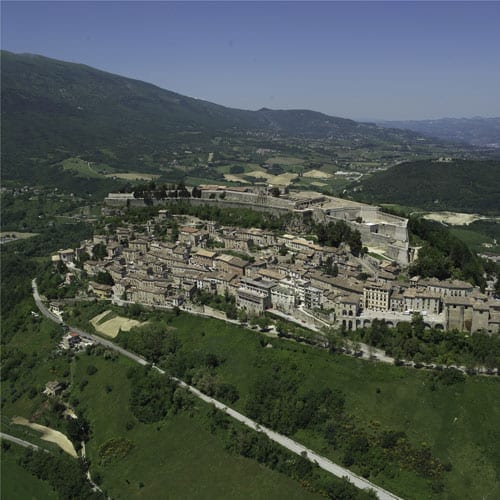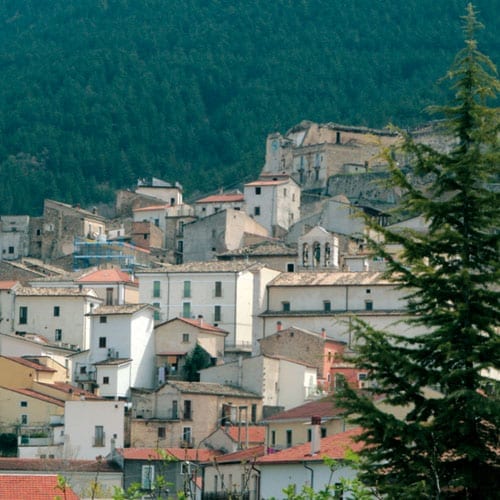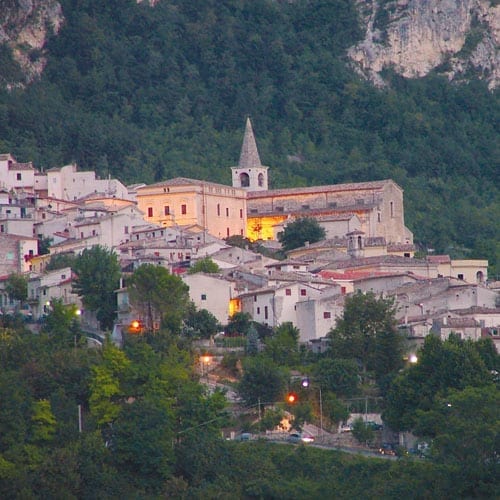 Città Sant’Angelo
Città Sant’Angelo
MUNICIPALITY OF citta’ sant’angelo
(Pescara District)
Altitude
mt. 320 a.s.l.
POPULATION
14.250 (988 in the historical centre)
Patron SAINT
San Michele Arcangelo, on Monday following the third Sunday of September
TOURIST INFORMATION
Culture office, (N. Castagna Town Hall Library)
vico Mattuffi, Ph. 085 9696216
www.comune.cittasantangelo.pe.it
www.visitacsa.it

The name derives from the cult of the angel probably brought by Longobards
More than a village, Città Sant’Angelo is a small town; from the natural viewpoint where it was built, you can enjoy a magnificent view of the Maiella and Gran Sasso mountains but also of the coastline of Pescara.
The medieval urban plan, with a herring-bone structure, is shown by the number of alleys (called “ruve”, rue) intersecting the long main street that crosses the old town.
The church of Sant’Antonio, located at the entrance of the centre, has one nave walls decorated with Baroque stuccoes. Leaving the civic park you can see an ancient cistern (1886) that holds up much of the garden. Going along the main street, you get to the church of San Michele Arcangelo, which became the Collegiate church in the 1353; this church is considered the symbol of Città Sant’Angelo.
Built on a former building dating back to the ninth century, the church has two aisles and a fine portico divided into two roofed-over atriums; between them, a large church steps leads to the artistic portal by the sculptor Raimondo di Poggio from Atri (1326).
Inside the church is in Baroque style, with a wood coffered ceiling (1911) and beautiful frescoes, attributed to the Master of Offida (XIV century), that have been recently restored.
The church also houses an imposing wooden polychrome statue of San Michele (XIV century), a carved choir stalls with lectern by the Angolan cabinet-maker Giuseppe Monti (XVII century), the sarcophagus of the Bishop Amico Bonamicizia and a polychrome pottery statue representing a Madonna delle Grazie by the Master of Fossa (XIV century).
Outside you can admire a stone pulpit, dating back to the ninth century, placed at the base of the entrance shrine of the staircase.
Going on along the main street you can see Palazzo Giampietro, with a medieval courtyard with superposed orders, Palazzo Colamico, Palazzo Sozj, Palazzo Ursini, with an elegant façade, and Palazzo Coppa Zuccari.
You will soon get to the church of San Francesco, inserted into a larger architectural complex; the precious cloister restored is in the former convent that now houses the Town Hall.
The church preserves many precious works of art: a wonderful portal by Raymondo di Poggio (XIV century), a peculiar fifteenth century square bell tower, a mosaic floor (1845) and a fine painting of the Madonna del Rosario and San Domenico by Paolo De Cecco. The Baroque reconstruction dates back to 1741, but the primitive church plan dates back to the thirteenth century. Some remains of Renaissance frescoes have been discovered recently behind a wall.
Walking along one of the picturesque alleys, you get to the church of Santa Chiara with a trilobe plan (the only example in the entire region), which is worth visiting for the magnificent stuccoes and gildings and the fine mosaic floor.
It was the private chapel of the Poor Clares, who also owned the vast monastery now used as a cultural centre.
Santa Chiara represents the apex of the late Baroque period, corresponding to a phase of relative political stability under the Kingdom of Naples, which stratifies the urban structure, giving the monuments a uniform style.
Going back to the high street, you can appreciate the Baronial Palace that is the most ancient aristocratic residence in the town, together with Palazzo Crognale, Palazzo Colella, Palazzo Maury and Palazzo Castagna.
The church of Sant’Agostino, with the convent at the back, is a perfect background for the high street; the church has a single nave and four altars decorated with stuccoes and carvings, the work of Alexander Terzani from Como; the façade has four pilaster strips.
Almost next to it is the church of San Salvatore, now a Civic Museum: the classical style façade, restored in the eighteenth century, presents two niches with two plaster statues on both sides of the central window: the Saviour and the Immaculate Conception by Zopito Grella, a local artist.
Then going down toward the ring road you can see Palazzo Coppa, which was the ancient convent of the church of San Bernardo; the church was built on a pre-existing fourteenth century structure of which just some arches (visible on the outside) and the frescoed crypt remain.
After a glance to Palazzo Basile, the tour ends at Porta Sant’Egidio, built together with Porta Sant’Antonio (today know as Porta Nuova) between the late eighteenth and the mid nineteenth century; the other two gates, Porta Casale and Porta Licinia, probably date back to the fourteenth century.
The vines and the olive trees of the Angolan hills, so close to the sea, take advantage from the mild climate. The result is the DOP extra virgin olive oil “Aprutino-Pescara”, extracted by the six mills in the area, which is fruity flavoured and of low acidity; and a DOC “Montepulciano d’Abruzzo” wine.
More over, a fine production of Trebbiano and Cerasuolo wines, and also Pecorino wine, produced from a vine that has been rediscovered in recent years.
Guarda tutti i video sulla pagina ufficiale Youtube de I Borghi più belli d’Italia.

